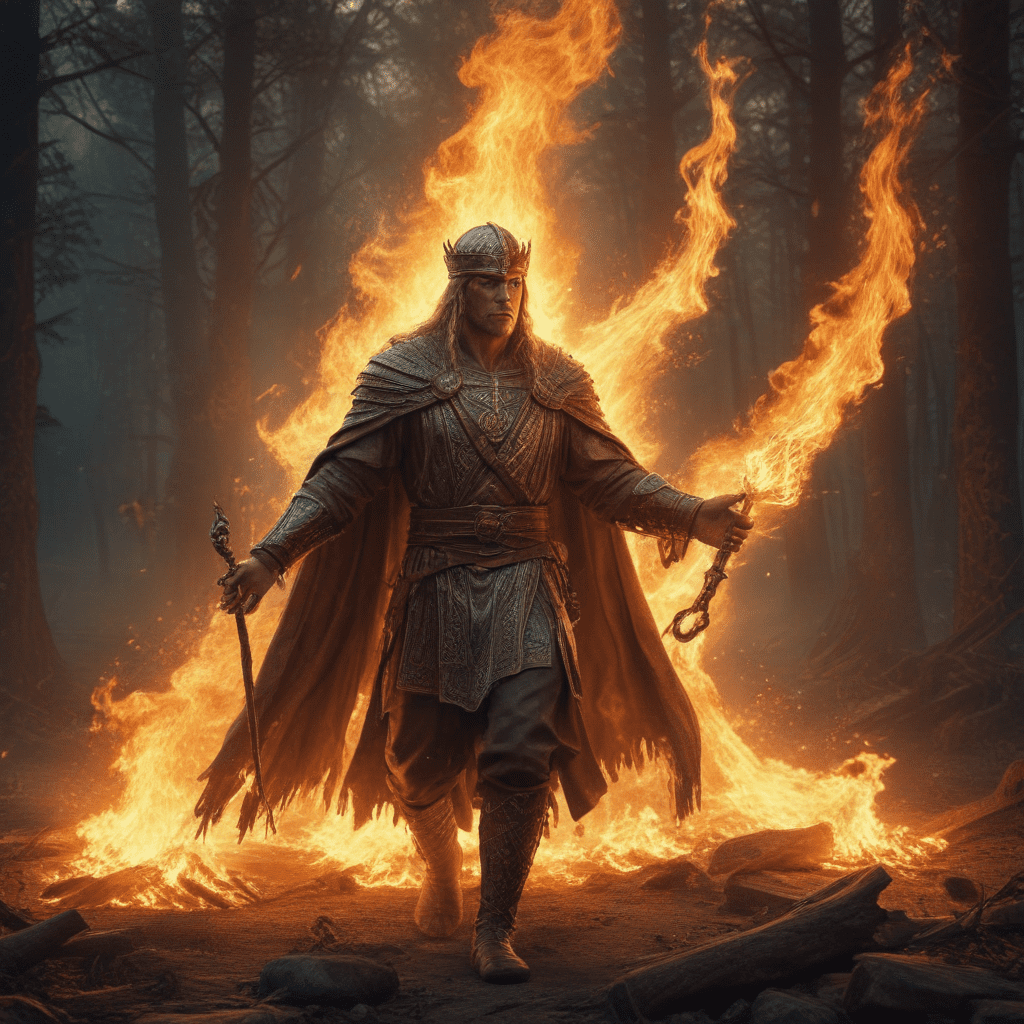The Concept of Renewal in Slavic Mythology
1. Introduction
Renewal was a fundamental concept in Slavic mythology. The Slavic peoples saw the world as constantly evolving, with death and rebirth as essential parts of the natural cycle. This idea permeated all aspects of their lives, from their religious beliefs to their social and cultural practices.
2. The Cyclical Nature of Time
The Slavs believed that time moved in a cyclical fashion. The year was divided into four seasons, each representing a different stage in the cycle of life, death, and rebirth. Spring was a time of new beginnings, while summer was a time of growth and abundance. Autumn was associated with the harvest and decay, while winter symbolized death and rebirth.
3. The Role of Death and Rebirth
Death was not feared in Slavic mythology, but rather seen as a necessary part of the cycle of life. The Slavs believed that all creatures had two souls, one physical and one spiritual. When the physical body died, the spiritual soul was believed to continue living, either in the afterlife or in a new body through the process of reincarnation.
4. Symbols of Renewal in Nature
The Slavs saw evidence of renewal all around them in nature. The changing seasons, the growth and decay of plants, and the cycles of the moon and sun were all reminders of the cyclical nature of life. Certain symbols, such as the horse, the sun, and the tree, were associated with fertility and renewal.
5. The Concept of Regeneration
The concept of regeneration was also important in Slavic mythology. The Slavs believed that the world had the ability to heal itself after being damaged or destroyed. This idea was evident in their belief in the god Veles, who was associated with the powers of rejuvenation and healing.
6. The Importance of Rituals and Festivals
Rituals and festivals played an important role in the Slavic concept of renewal. These events were held throughout the year to celebrate the changing seasons and to honor the gods. The Slavs believed that these rituals helped to ensure the fertility of the land and the well-being of the community.
7. The Role of Fire and Water in Renewal
Fire and water were both considered to be powerful agents of renewal in Slavic mythology. Fire was believed to purify and cleanse, while water was associated with fertility and growth. The Slavs used fire in many of their rituals, and they often bathed in rivers or lakes to cleanse themselves of impurities.
8. The Renewal of the Soul
The Slavs believed that the soul was capable of being renewed through a process of purification and rebirth. This belief was reflected in their rituals, which often involved the use of fire or water. The Slavs also believed that the soul could be reborn into a new body after death.
9. The Social and Cultural Significance of Renewal
The concept of renewal was not only important in the religious life of the Slavs, but also in their social and cultural life. The Slavs celebrated the changing seasons with festivals and rituals, and they often used symbols of renewal in their art and crafts. The belief in renewal gave the Slavs a sense of hope and optimism, and it helped them to cope with the challenges of life.
10. Conclusion
Renewal was a fundamental concept in Slavic mythology, shaping their beliefs and practices. The Slavs saw the world as constantly evolving, with death and rebirth as essential parts of the natural cycle. This idea permeated all aspects of their lives, from their religious beliefs to their social and cultural practices.
Frequently Asked Questions (FAQs)
What does the concept of renewal mean in Slavic mythology?
Renewal in Slavic mythology refers to the idea that the world is constantly evolving, with death and rebirth as essential parts of the natural cycle. This concept was reflected in the Slavic people's religious beliefs, social practices, and cultural traditions.
How did the Slavs view death and rebirth?
The Slavs did not fear death, but rather saw it as a necessary part of the cycle of life. They believed that all creatures had two souls, one physical and one spiritual. When the physical body died, the spiritual soul was believed to continue living, either in the afterlife or in a new body through the process of reincarnation.
What were some of the symbols of renewal in Slavic mythology?
The Slavs saw evidence of renewal all around them in nature, and certain symbols, such as the horse, the sun, and the tree, were associated with fertility and renewal. These symbols were often used in Slavic art and crafts, and they played a role in many Slavic rituals and festivals.
How did the Slavs celebrate renewal?
The Slavs celebrated renewal through a variety of rituals and festivals. These events were held throughout the year to honor the changing seasons and the gods. The Slavs believed that these rituals helped to ensure the fertility of the land and the well-being of the community.



